
Happy Halloween! Since this is the season of zombies, vampires and ghosts, we thought, why not bring Art History Tales of Terror back from the grave for a new round of chills and thrills. We're exposing the spooky hidden secrets behind your favorite masterpieces!
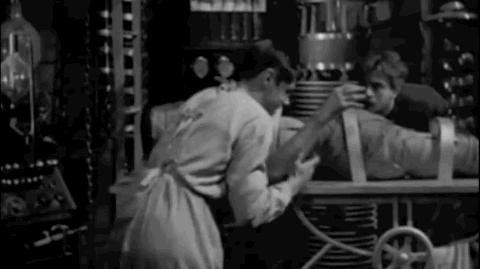
These may look like fetching maidens and idealized landscapes, but you’ll never guess what horrors lie in the backstories. Read on to find out...if you dare!
Maria Theresa: Vampire Hunter
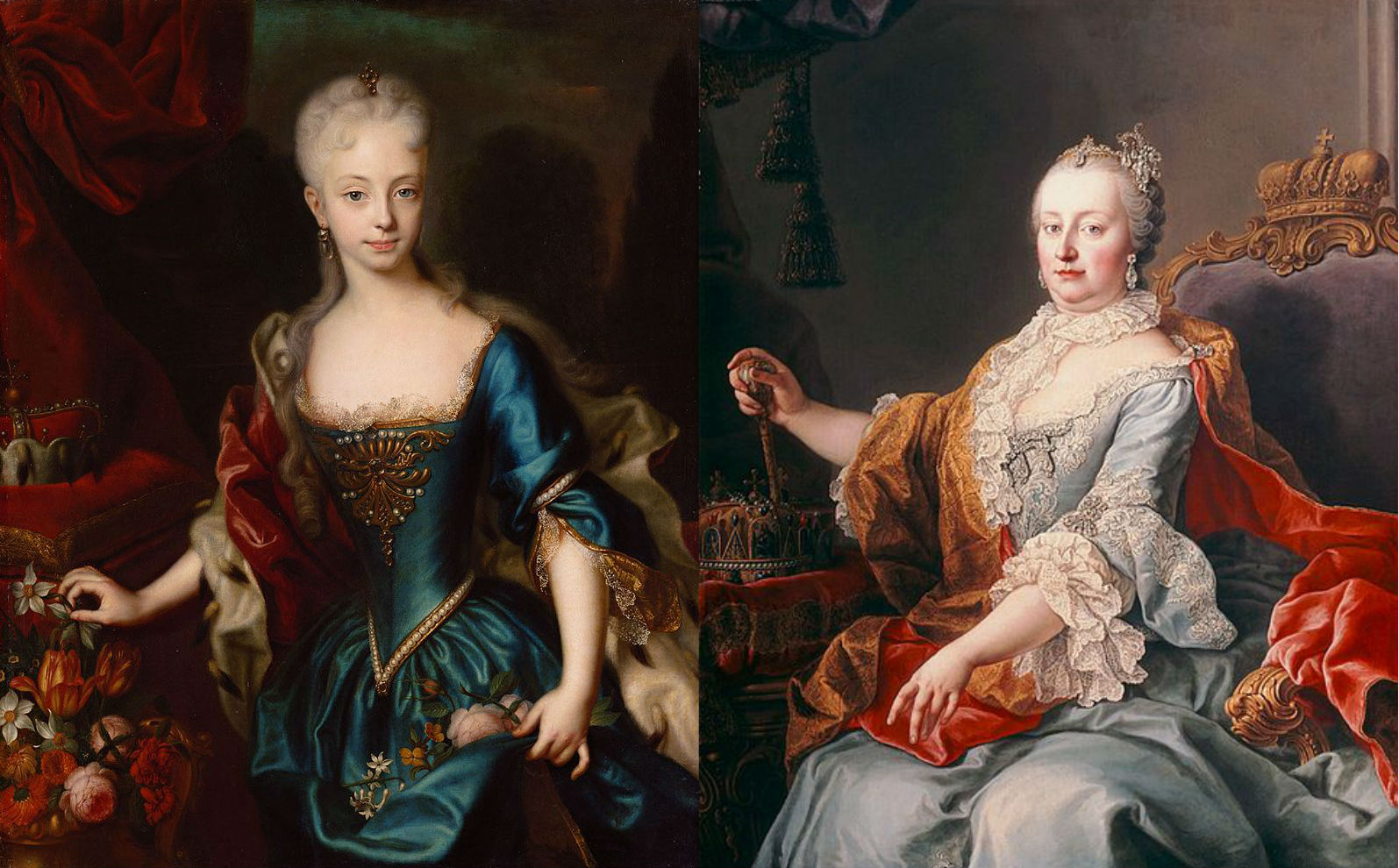
Archduchess Maria Theresa by Andreas Moller, in the Museum of Art History Vienna (left). Empress Maria Theresia of Austria by Martin van Meytens, in the Academy of Fine Arts Vienna (right).
It is hard to imagine that the lovely young princess on the left grew into the formidable badass on the right: Maria Theresa of Austria, ruler of the mighty Habsburg Empire, and...hunter of vampires? Yes, you read that right. In 1755, coincidentally the same year Maria Theresa gave birth to her most famous child, the ill-fated Marie Antoinette, the Empress sent court physician Gerard van Swieten to the province of Moravia in the modern-day Czech Republic to investigate reports of vampires. Indeed, there was a mass hysteria throughout the Empire that the dead were rising from their graves and feeding on the blood of the living, resulting in the burning and decapitation of bodies, and driving stakes through the hearts of corpses. Even the nobility were not above suspicion of being in the evil ranks of the undead. Recent excavation of the grave of Princess Eleonore von Schwarzenberg showed that she had been exhumed and reburied with her disembodied head placed between her legs, a common precaution against vampirism.
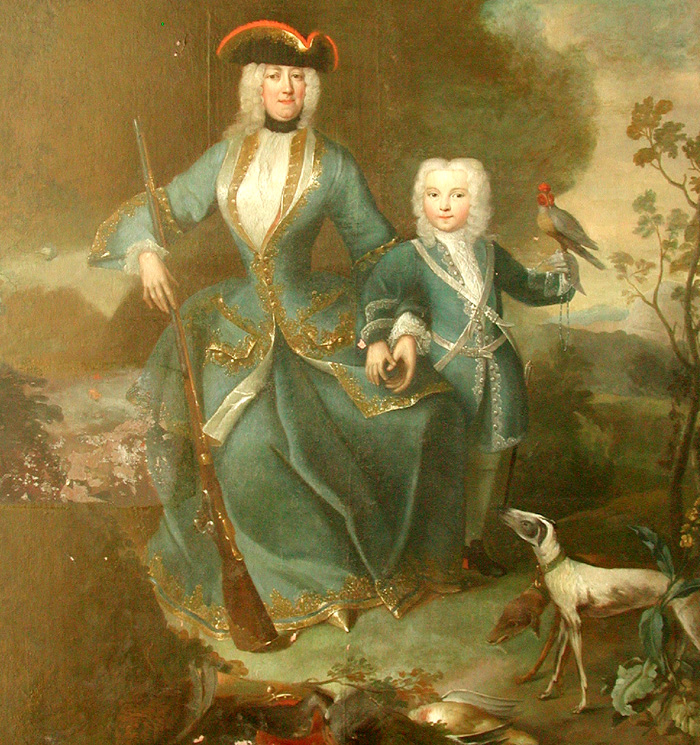
Portrait of Eleonore of Schwarzenberg with her son Joseph by Maximilian Hannel, in Cesky Krumlov Castle. A real-life vampire princess?
Van Swieten concluded that there was no substantial evidence of vampirism, and attributed the reports to natural causes, ignorance, and superstition. Consequently, Maria Theresa banned anti-vampire rituals in order to prevent the desecration of graves. Though van Swieten dismissed claims of vampirism, he was partly the model for Bram Stoker’s famous vampire slayer of Dracula, Van Helsing.
The Terror
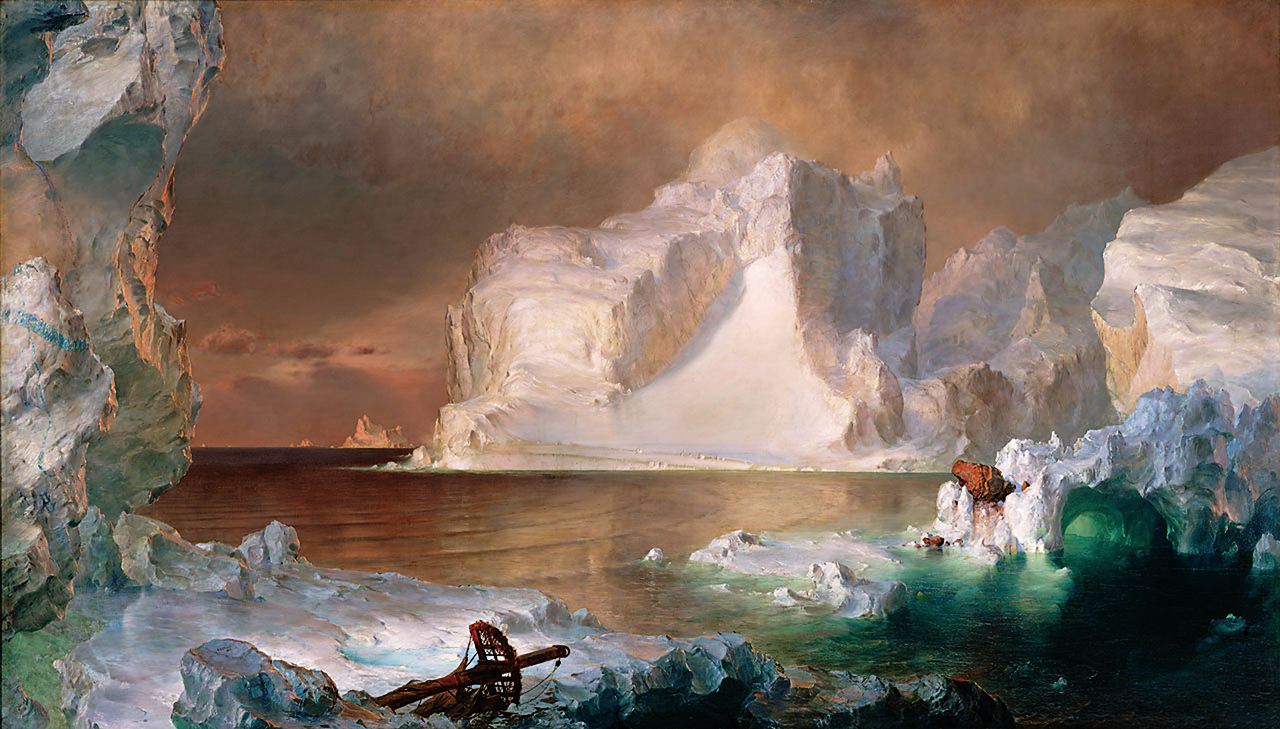
The Icebergs by Frederic Edwin Church, in the Dallas Museum of Art.
Frederic Edwin Church was famous for his romanticized landscapes of dramatic vistas, but for The Icebergs, he had a darker inspiration. The broken ship mast in the foreground is an ode to Captain John Franklin’s lost expedition. Mary Shelley’s iconic novel Frankenstein opens with an arctic expedition stranded in ice encountering a terrifying creature. In 1845, life imitated art when Captain John Franklin’s expedition to find the Northwest Passage, led by a ship ominously called The Terror, became icebound. The 129 people involved in the expedition were never seen alive by Europeans again.
The Franklin expedition remained missing for many years, with search parties yielding only artifacts and a few indigenous Inuit accounts, and the ships weren’t located until 2014 and 2016. Excavation of human remains in the 1980s showed signs of disease, starvation and even cannibalism, but the disappearance of the expedition and deaths of all 129 members have never been fully explained. Horror author Dan Simmons used their mysterious fate as the basis for his bestselling novel The Terror, in which an unseen predator stalks and kills the members of the expedition one by one. The ice surrounding the dead bodies kept them shockingly well-preserved; ghoulish faces frozen in time.
WARNING: Pictures of actual dead people below!
.
.
.
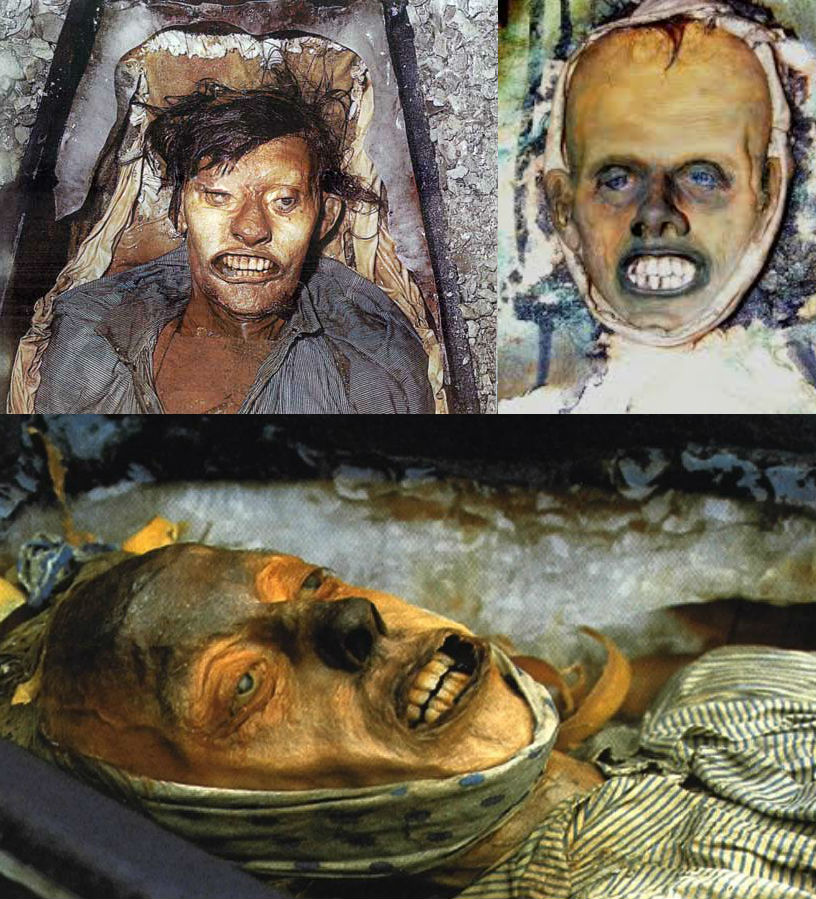
Bodies excavated from the Franklin expedition gravesites.
California Cannibals
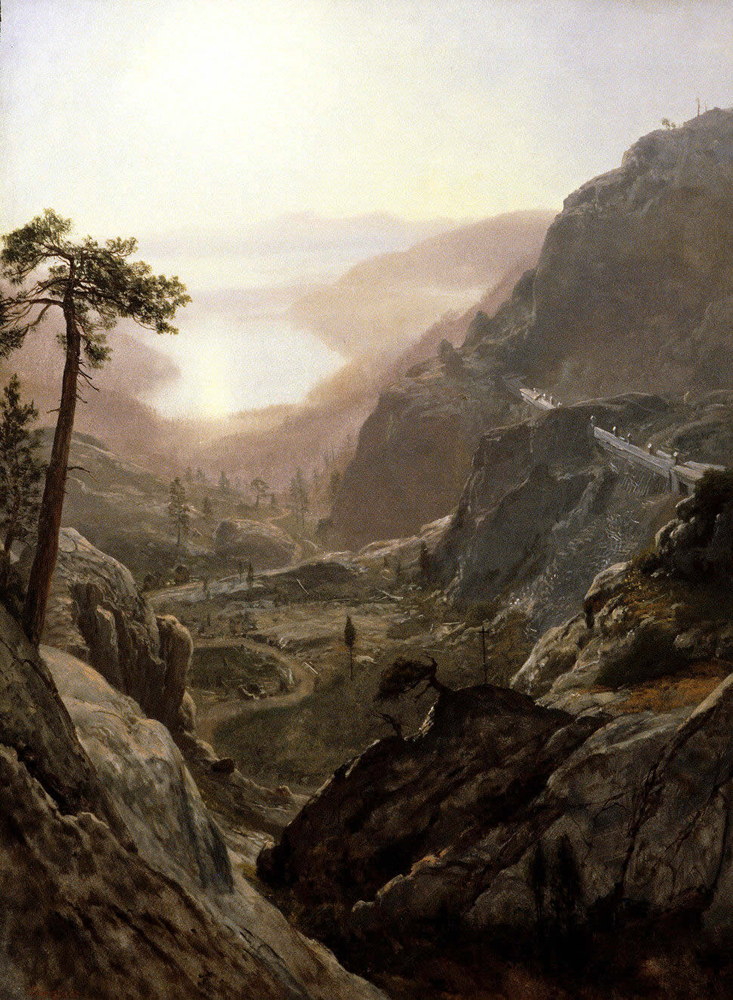
View of Donner Lake, California by Albert Bierstadt, in the de Young Museum.
Church wasn’t the only romantic landscape painter whose work masks a sinister backstory. Any school-child has probably heard the story of the Donner Party, a group of pioneers who were stranded in the Sierra Nevada Mountains during a harsh winter and turned to cannibalism to survive. What your fourth grade teacher probably didn’t tell you is just how horrific the incident may have been. Survivor accounts include tales of parents weeping as they fed human flesh to their unknowing toddlers, a mother gleefully announcing that she had cooked a young man’s arm, and even one first-hand account of a man devouring a raw baby. Viewers won’t see a trace of that macabre history in this beautiful landscape, but the artist may have wanted them to. Bierstadt originally called this Sunrise on the Sierra’s but changed the title to include the name of Donner, perhaps sensing the commercial appeal of a hint of gore.

The Lady Vanishes
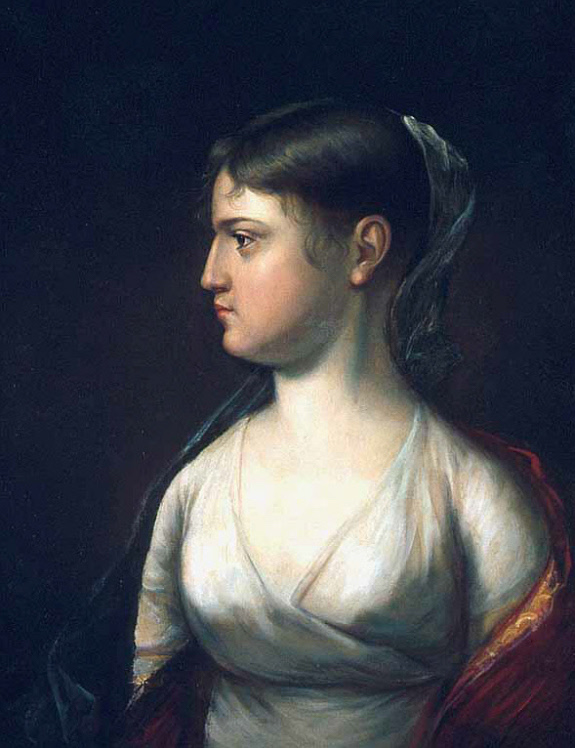
Theodosia Bartow Burr Alston after John Vanderlyn, in the Smithsonian National Portrait Gallery.
Theodosia Burr Alston is the subject of the song Dear Theodosia from the hit musical, Hamilton, as the first-born and most beloved child of Aaron Burr, “the damn fool that shot,” Alexander Hamilton. She was without question the most educated American woman, if not person, of her time. Two centuries before #I’mWithHer, Burr hoped she would rise to be the first great American stateswoman. Tragically, Theodosia vanished without a trace at age 29 after boarding the schooner Patriot in 1813. Most likely, the ship and Theodosia went down in a storm. Regardless, a multitude of haunting theories try to explain her disappearance. A horrifically violent explanation proposes she was raped and/or murdered by pirates. A fanciful account has her assuming an alternate identity and living out her life as an obscure fishwife. The most sensational legend has her washing ashore in East Texas where she was discovered by a Native American chief, chained to a bulkhead and naked, but for a gold locket. However, a similarly bizarre theory may have a kernel of truth.
In the several decades after Theodosia’s disappearance, a man noticed a finely painted portrait of a genteel woman amidst the squalid clutter of a North Carolina fishing shack. the woman of the house claimed her husband had salvaged the painting from an abandoned wreck during the war of 1812 in the same area where The Patriot had vanished. Could this be the real Theodosia Burr Alston? Locals say that Theodosia’s ghost still roams the beaches of North Carolina on stormy nights, searching for her lost painting.
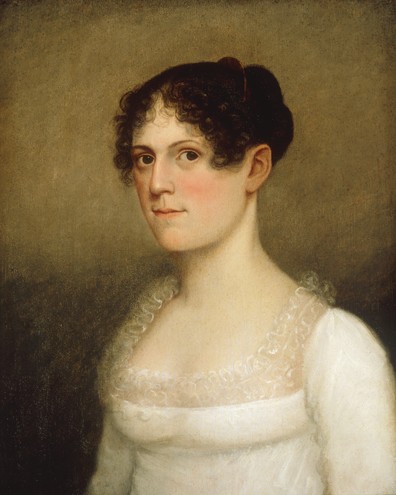
Mystery Portrait discovered in Nagg’s Head North Carolina, thought to resemble Theodosia Burr Alston at the time of her disappearance, in the Lewis Walpole Library.
Buried Alive
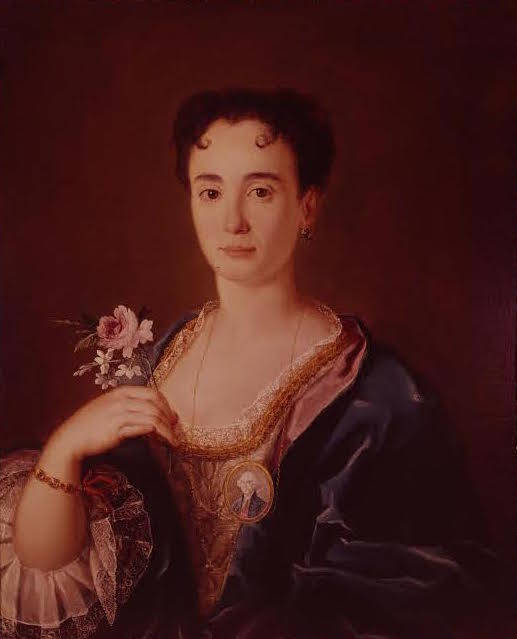
Portrait of Anne Hill Carter Lee by a mystery artist, in the collection of Washington and Lee University. Image by permission of Washington and Lee University.
Who would believe that the demure young lady in this portrait has links to the historical horror of slavery, as well as one of the world’s most famous horror writers? Anne Hill Carter Lee is best remembered as the mother of Confederate General Robert E. Lee. Her son has been in the news much of late, in the form of monumental statues across the nation that many feel enshrine the painful legacy of slavery. Lee himself was uneasy about slavery and secession, and warned against the dangers of memorializing the Confederacy, an irony which is probably lost on statue apologists. Perhaps he understood, as his apologists do not, that the only way forward for national healing was coming to terms with the horrors of our slaveholding past. But now we deal with horror of a different sort.
At 20, Anne married Harry “Lighthorse” Lee, a Virginia congressman and friend of George Washington. The miniature of Washington pinned to her bodice in the portrait was a wedding gift from the President himself! Despite her loveliness and youth, Anne suffered from narcolepsy, a disorder in which the afflicted fall into deathlike sleep. According to Lee family lore (it doesn’t appear in the records, but is part of the family’s oral history) Anne fell into such a state in 1804, and was pronounced dead and interred in the Lee vault. Later, a sexton bringing flowers to her grave heard cries for help coming from within the crypt, and opened her casket to find the terrified Mrs. Lee in an apparent state of shock and confusion. The story became a popular local legend, and Maryland native Edgar Allan Poe was probably thinking of the tale when he wrote Premature Burial, about the wife of a prominent congressman who is mistakenly buried alive.
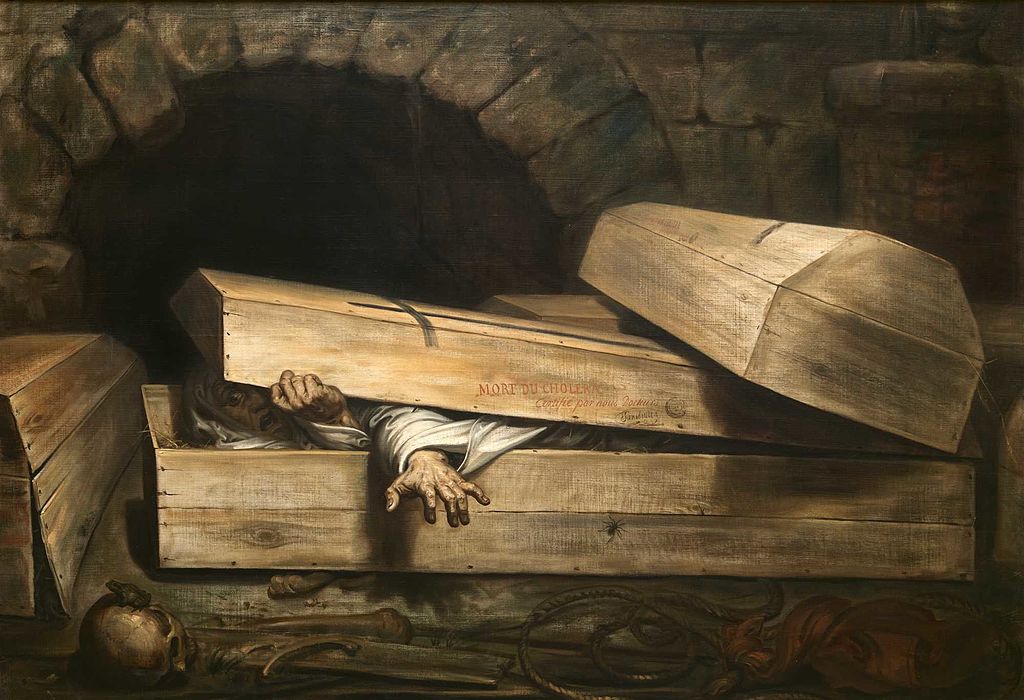
The Premature Burial by Antoine Wiertz, in the Wiertz Museum.
No thanks. I’ll take cremation please. I don’t like a gamble.
Whoever said that art history was boring must not have been a horror fan, because these paintings have morbid backstories fit for Tales from the Crypt. This Halloween, you might want to consider skipping the haunted house, and brave a blood-curdling walk through your favorite museum instead!
By Griff Stecyk









